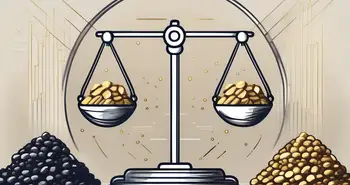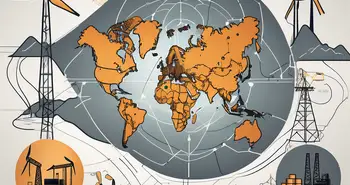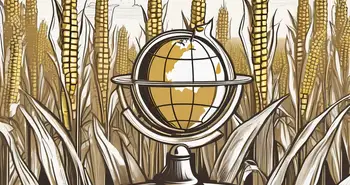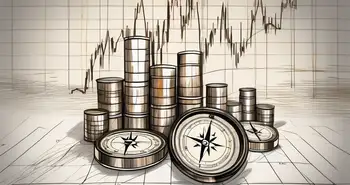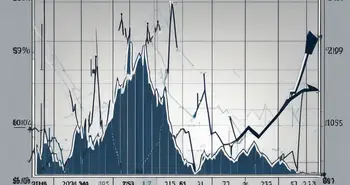Agricultural Commodities Trading Explained

As an expert in agricultural commodities trading, I am here to provide you with the ultimate guide to understanding this exciting and potentially lucrative market. Whether you are a seasoned trader or a beginner looking to dive into the world of commodities, this comprehensive guide will equip you with the knowledge and strategies needed to excel. So, let's get started!
Understanding Agricultural Commodities Trading
Before delving into the specifics, it's important to understand the basics of agricultural commodities trading. At its core, this type of trading involves the buying and selling of agricultural products, such as grains, livestock, dairy products, and more. The market operates on the principles of supply and demand, with prices fluctuating based on various factors that impact the agriculture industry.
Now that we have a general understanding of agricultural commodities trading, let's take a closer look at some key aspects of this market.
The Basics of Agricultural Commodities
In the world of agricultural commodities, it's essential to have a solid grasp of the fundamental concepts. This includes understanding factors such as production cycles, weather conditions, and global trade policies that can significantly influence prices. By staying informed and analyzing market trends, you can make informed decisions when buying or selling agricultural commodities.
Let's explore production cycles in more detail. Each agricultural commodity has its own unique production cycle, which refers to the time it takes for a crop or livestock to go from planting or birth to harvest or maturity. Understanding these cycles is crucial because it allows traders to anticipate when certain commodities will be available in the market and adjust their trading strategies accordingly. For example, if you know that the production cycle for corn takes approximately four months, you can plan your trades accordingly, taking into account the expected supply and demand dynamics during that period.
Key Players in Agricultural Commodities Trading
When it comes to agricultural commodities trading, there are several key players involved. These include farmers, traders, exporters, importers, and even governments. Each participant has a unique role to play in the market and contributes to the overall dynamics of supply and demand. Understanding the motivations and actions of these key players can help you anticipate market movements and make profitable trades.
Let's focus on the role of farmers in agricultural commodities trading. Farmers are the backbone of the industry as they are responsible for producing the commodities that are traded. Their decisions regarding what crops to grow, when to plant and harvest, and how to manage their land have a direct impact on the supply side of the market. Farmers also face various challenges, such as unpredictable weather conditions, pests, and diseases, which can affect their yields and, consequently, the overall supply of agricultural commodities. By keeping a close eye on the activities and challenges faced by farmers, traders can gain valuable insights into potential supply disruptions or surpluses, enabling them to make informed trading decisions.
The Role of Supply and Demand in Agricultural Commodities
Supply and demand play a vital role in determining the prices of agricultural commodities. Factors such as weather conditions, crop diseases, and geopolitical events can impact both the supply and demand sides. For example, droughts can reduce crop yields, leading to a decrease in supply and an increase in prices. On the other hand, changes in dietary preferences or population growth can drive up demand for certain commodities.
Let's delve deeper into the impact of weather conditions on supply and demand. Weather plays a critical role in agricultural commodities trading as it directly affects crop yields. Extreme weather events, such as hurricanes, floods, or heatwaves, can devastate crops and significantly reduce the overall supply. Conversely, favorable weather conditions, such as ample rainfall and moderate temperatures, can lead to bumper harvests and an abundance of supply. Traders closely monitor weather forecasts and historical data to assess the potential impact on crop yields and adjust their trading strategies accordingly.
By understanding the intricate relationship between supply, demand, and various external factors, traders can navigate the agricultural commodities market with greater confidence and increase their chances of making profitable trades.
Types of Agricultural Commodities
Agricultural commodities can be classified into various categories. Let's explore some of the most common types:
Grains and Oilseeds
Grains, such as wheat, corn, and rice, are staple crops that form the basis of many diets around the world. Oilseeds, including soybeans and rapeseed, are used in food production and as a source of biofuel. These commodities are highly traded due to their importance in global food and energy markets.
Livestock
Livestock, such as cattle, hogs, and poultry, play a vital role in the agriculture industry. The trading of livestock commodities involves factors such as breeding cycles, feed prices, and consumer demand for meat products. Understanding these dynamics is crucial for successful trading in this sector.
Dairy Products
Dairy commodities, such as milk, cheese, and butter, have their own unique market dynamics. Factors such as milk production, storage capacity, and consumer preferences can influence prices. Staying informed about the latest trends and developments in the dairy industry is crucial for trading success.
Other Agricultural Commodities
Aside from grains, oilseeds, livestock, and dairy products, there is a wide range of other agricultural commodities worth exploring. These include fruits, vegetables, sugar, coffee, cocoa, and more. Each commodity has its own unique set of supply and demand factors that traders should be aware of.
Trading Platforms for Agricultural Commodities
Now that we have covered the basics, let's explore the trading platforms available for agricultural commodities:
Physical Trading
Physical trading involves the actual buying and selling of physical commodities. This can be done through direct contact with farmers, local markets, or specialized wholesale channels. Physical trading requires a deep understanding of the quality, storage, and transportation aspects of the commodities being traded.
Futures Trading
Futures trading involves buying or selling contracts to deliver or receive agricultural commodities at a future date. These contracts are standardized and traded on regulated exchanges. Futures trading allows traders to speculate on price movements without taking physical ownership of the commodities.
Options Trading
Options trading provides traders with the right, but not the obligation, to buy or sell agricultural commodity contracts. This flexibility allows traders to hedge their positions or take advantage of potential price movements. Options trading requires a thorough understanding of market dynamics and option pricing.
Risks and Challenges in Agricultural Commodities Trading
While agricultural commodities trading offers tremendous opportunities, it is not without risks and challenges. Let's explore some of the key factors to be aware of:
Price Volatility
Price volatility is a significant risk in agricultural commodities trading. Factors such as weather events, geopolitical tensions, and global economic conditions can lead to sudden price fluctuations. Traders must be prepared for these ups and downs and have risk management strategies in place.
Weather and Climate Impact
The agriculture industry is highly susceptible to weather and climate conditions. Droughts, floods, hurricanes, and other natural disasters can have a severe impact on crop yields and livestock production. Traders need to stay informed about weather patterns and closely monitor their potential impact on commodities.
Government Policies and Trade Agreements
Government policies and trade agreements can significantly influence agricultural commodities trading. Tariffs, subsidies, quotas, and import/export regulations can disrupt market dynamics and create uncertainties. Traders need to stay updated on the latest policy developments to navigate these challenges effectively.
Now that we've covered the key aspects of agricultural commodities trading, let me share a personal story that showcases the importance of staying informed and adapting to market conditions.
Early in my trading career, I focused solely on grain commodities. One year, there was an unexpected drought that devastated crop yields across the region. Prices skyrocketed, catching many traders off guard. However, I had been closely monitoring weather patterns and had established a diverse portfolio that included water-efficient crops.
As a result, I was able to take advantage of the price surge and offset potential losses from other commodities. This experience taught me the importance of diversification and staying ahead of market trends.
FAQs
Now, let's revisit some of the key points covered in this guide through frequently asked questions:
Q: What are agricultural commodities?
A: Agricultural commodities are products derived from farming activities, such as grains, livestock, and dairy products, which are traded in various markets worldwide.
Q: What factors influence agricultural commodities prices?
A: Several factors can impact agricultural commodities prices, including weather conditions, supply and demand dynamics, government policies, and global trade agreements.
Q: What are the different types of agricultural commodities?
A: Grains and oilseeds, livestock, dairy products, and various fruits, vegetables, and other crops are among the different types of agricultural commodities.
Q: How can I trade agricultural commodities?
A: There are several trading platforms available, including physical trading, futures trading, and options trading. Each platform has its own unique characteristics and requirements.
Q: What are the risks in agricultural commodities trading?
A: Price volatility, weather and climate impact, and government policies and trade agreements are among the key risks and challenges in agricultural commodities trading.
Q: How can I mitigate risks in agricultural commodities trading?
A: To mitigate risks, it is crucial to stay informed, diversify your portfolio, monitor market trends, and develop risk management strategies.
With these essential insights and tips, you are now well-equipped to embark on your journey into the world of agricultural commodities trading. Remember to always stay informed, adapt to market conditions, and diversify your portfolio. Happy trading!
Ready to take your agricultural commodities trading to the next level? Discover the transformative power of Morpher, the revolutionary trading platform that leverages blockchain technology for a seamless, fee-free, and infinitely liquid trading experience. Whether you're interested in grains, livestock, or any other asset class, Morpher's fractional investing, short selling capabilities, and up to 10x leverage can help you maximize your trading strategies. With the safety of a non-custodial wallet and the innovation of Virtual Futures, Morpher is the ideal platform for traders who demand flexibility and control. Sign Up and Get Your Free Sign Up Bonus today to unlock a unique trading experience that's as boundless as your ambitions.

Disclaimer: All investments involve risk, and the past performance of a security, industry, sector, market, financial product, trading strategy, or individual’s trading does not guarantee future results or returns. Investors are fully responsible for any investment decisions they make. Such decisions should be based solely on an evaluation of their financial circumstances, investment objectives, risk tolerance, and liquidity needs. This post does not constitute investment advice.

Painless trading for everyone
Hundreds of markets all in one place - Apple, Bitcoin, Gold, Watches, NFTs, Sneakers and so much more.

Painless trading for everyone
Hundreds of markets all in one place - Apple, Bitcoin, Gold, Watches, NFTs, Sneakers and so much more.

